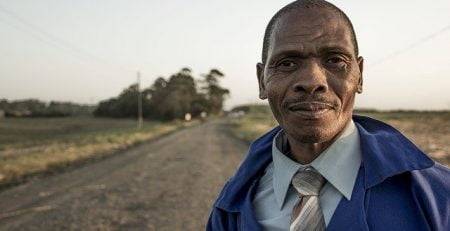Socio-Economic Development and BEE
Socio-Economic Development and BEE: Here’s what you need to know

What is BEE? When and why was BEE instituted? What does SED stand for? What role does SED play in the BBBEE strategy to deliver change for the masses of South Africa? How can your company take part? These are questions that come up when we consider participation in Socio-Economic Development activities. Umsizi Sustainable Social Solutions is able to provide informed responses to these questions. As an expert in the field of SED and BEE, Umsizi can help your company design SED projects that demonstrate measurable and enduring change. Here is an overview of BEE and SED and how these relate to each other.
What is BEE?
BEE stands for Black Economic Empowerment. This is a policy initiative by the South African government implemented as a form of affirmative action. Its intent is to redress inequalities occasioned by Apartheid by creating opportunities for the participation of Historically Disadvantaged Black Persons (classified as African, Indian and Coloured) in skills development, ownership, management and development of enterprises, procurement and overall Socio-Economic Development.
When and Why was BEE Instituted?
The first democratically elected government came into power in 1994. One of its priority mandates was to facilitate a process of meaningful inclusion of black people in the mainstream of economic activity. The objective was to rectify the former government’s legacy of unequal socio-economic relations in a planned, coherent and sustained way.
In 2003, the Broad-Based Black Economic Empowerment (B-BBEE) Act was introduced as a sequel to the BEE programme. The B-BBEE programme was amended and published in 2013 (B-BBEE Act 46 of 2013) as development imperative aimed at creating an even broader enabling environment for participation by Black people, and with specific economic transformation targets.
What is SED?
 SED simply stands for Social and Economic Development. It is measured by various Indicators. These Indicators include Literacy, Life Expectancy, GDP, Levels of Employment, Personal Dignity, Safety, and Participation, among others.
SED simply stands for Social and Economic Development. It is measured by various Indicators. These Indicators include Literacy, Life Expectancy, GDP, Levels of Employment, Personal Dignity, Safety, and Participation, among others.
Although South Africa has made significant progress in the improvement of her citizens’ welfare since 1994, the pace of economic transformation and social upliftment has not been what was hoped for. This is one of the reasons that in order to get BEE points, companies must focus on Socio-Economic Development, which is included in the BEE scorecard. This is to encourage the private sector to be part of the solution to ensuring SED takes place, which will benefit their fellow citizens in broader and meaningful ways.
What role does SED play in the BBBEE strategy?
The overarching objective of BBBEE is the empowerment of more black people to own and manage economic enterprises. This anticipates a positive shift in the racial balance in terms of skilled manpower, key business sector ownership and management. The broader participation in Socio-Economic Development by black persons implies inclusion of oft marginalized rural or peri-urban business actors. Growth of local business enterprises is an important aspect of BBBEE strategy. As such South Africa’s Socio-Economic policies are largely framed in such a way as to ensure that there is intentional creation of environments that are conducive for the growth of black-owned local small, medium and micro enterprises (SMMEs). That is why there are such provisions as preferential procurement policies that regulate Government procurement processes. Social Labour Plans also have procurement thresholds that are meant to level the ground for local suppliers of goods and service providers.
Bearing the above in mind, we can clearly see the purpose of the South African Socio-Economic Development Policies, namely, to provide access to the economy for the marginalized majority. The intentional application of this policy is the introduction, and constant monitoring, of the BEE scorecard. SED is the fifth of the 5 elements of the BEE scorecard system implemented in 2007. Through this, Government encourages Qualifying Small Enterprises (QSEs), i.e. those with a Turnover of more than 50 million Rands, to commit to making meaningful contribution to making the economy accessible to the previously marginalised. The intent is for those marginalised individuals to move toward the position of being committed business persons or aspirants themselves. QSEs are also to help in the building of capacity of those enterprises that through unfair exclusion have found it difficult to compete in the marketplace. QSEs may in the process earn valuable points on their score card as recognition of their contribution. However such contribution must be intentional and demonstrable, and not ad-hoc.
What are the particular examples of Socio-Economic Development contribution?
The SED contributions by QSEs may be categorised in this fashion:
- Human Resources Capacity. Any services provided to beneficiaries at no cost or reduced/discounted rates apply. It is recognised here that a company will have provided a service that the beneficiary will not have ordinarily been able to access. These services are considered as SED contributions and reckoned in the point system;
- Grant and Related. Any direct costs incurred by company for direct benefit of a beneficiary, or grant given to a beneficiary for capitalization, management of run-away overheads and related, will be accounted for as an SED contribution befitting recognition. The most effective grant is one which leads to livelihoods development with focus on income generation, or skills development – thereby removing dependency on ongoing grants.
Target beneficiaries for SED contributions may be individuals or communities. Contributions can be monetary or non-monetary. At least three-quarters of the communities or individual beneficiaries need to be categorised as Black people in terms of race.
SED contributions achieve at least two things: a) growing access to the economy for the previously disadvantaged Black people as QSEs provide support; b) Recognition of QSEs or General Entities through the BEE scorecard whose value is in the increased potential for QSE business growth that comes with a good BEE scorecard.
How are points claimed?
Contributions must be made within the period that the entity will be BEE rated. The usual financial period would apply, which is from the beginning of March to the end of February of every year. To achieve the maximum amount of points, the entity needs to spend a maximum of 1% of its net after tax profit on SED contributions. Fewer points are awarded if the spend is less than this. Points are awarded proportionately to the percentage of the achieved target.
Claiming points requires the entity to have a letter from the beneficiary. This letter must acknowledge that the contribution was received. It must also declare that the beneficiaries are seventy-five percent (or more) Black. This must also conform to the definition laid out in the Codes of Good Practice. The entire contribution needs to have been assigned to these beneficiaries. An Article 18A receipt and proof of payment must prove the contributions.
Finally, it is necessary that a competent third party also confirm that the recipients were Black. The percentage of Black beneficiaries must also be ratified. An example of such a third party would be the organisation’s auditor.
Umsizi’s Design, Monitoring, Evaluation and Knowledge Management Proficiencies
Umsizi has a track record of facilitating the design of SED projects/programmes and the broad empowerment of beneficiaries with the skills and know-how required to implement successful SED programmes. Relevant monitoring tools are built in as part of design of such project – be it Livelihoods, income generation projects, or enterprise development – enabling objective end-to-end evaluations at project/programme transitions. We have produced monitored evidence of sustainability of such projects as communities continue to operate even after initial capital injection. All of the programmes that Umsizi has designed are primed up to remove barriers to the economy and allow those at the bottom of the socio-economic pyramid to be socio-economically productive.
Bibliography/Further Reading
https://www.businessinsa.com/bee/
http://www.dti.gov.za/economic_empowerment/bee.jsp
http://www.dti.gov.za/ERPC/docs/2018_concept_note.pdf
https://www.golegal.co.za/socio-economic-development-bee/
https://www.definitions.net/definition/socioeconomic+development
https://umsizi.co.za/local-economic-development/
Example of a company showing its BEE credentials: https://umsizi.co.za/about/










